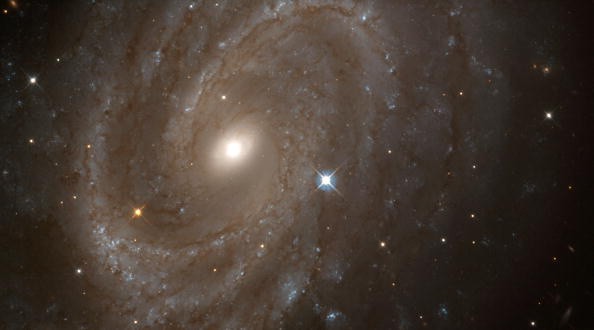The most-distant galaxy's radio signal has been recorded by astronomers.

The signal that SDSSJ0826+5630, a star-forming galaxy, generated is estimated to have been emitted when the Milky Way Galaxy was just 4.9 billion years old.
If you want to have a better idea, the Milky Way Galaxy is estimated to be over 13 billion years old as of writing.
Forbes reported that this galaxy exists closer to the Big Bang than other galaxies previously detected.
Most-Distant Galaxy's Radio Signal Captured
According to Space.Com's latest report, astronomers used the Giant Metrewave Radio Telescope in India to capture SDSSJ0826+5630's signal.

Involved astronomers used the gravitational lensing method, which relies on space-time ripples, which allows background objects to be magnified in the extreme by foreground heavenly bodies.
One of the most intriguing things about the signal emitted by SDSSJ0826+5630 is its 21-centimeter line wavelength.
Experts said that this significant wavelength has only been seen from nearby galaxies.
What the Galaxy's Signal is Big Deal
The discovery of the most-distant galaxy's radio signal led to a new study titled "Detection of H I 21 cm emission from a strongly lensed galaxy at z ∼ 1.3."
This research was published by the Royal Astronomical Society journal on December 23, 2022.
Lead researcher, Arban Chakraborty, explained why the radio signal is a big deal.
"It's the equivalent to a look-back in time of 8.8 billion years," he explained.
"Until now, it's only been possible to capture this particular signal from a galaxy nearby, limiting our knowledge to those galaxies closer to Earth," he added.
With the discovery of SDSSJ0826+5630's signal, many astronomers wonder if the world is ready to investigate the formation of the earliest stars and galaxies.
If you want to learn more details about the discovery of the most-distant galaxy's radio signal, you can click this link.
Other stories we recently wrote about galaxies:
The most detailed 3D map of the universe was confirmed. Experts said that over seven million galaxies were already charted.
We also reported that the NASA James Webb Space Telescope captured shiny pearls and diamonds in recently unseen galaxies.
For more news updates about galaxies and other space objects, keep your tabs open here at TechTimes.
Related Article: Astronomers Draft 10,000 Volunteers to Find Dark Energy in Nearly 250,000 Galaxies

ⓒ 2025 TECHTIMES.com All rights reserved. Do not reproduce without permission.




